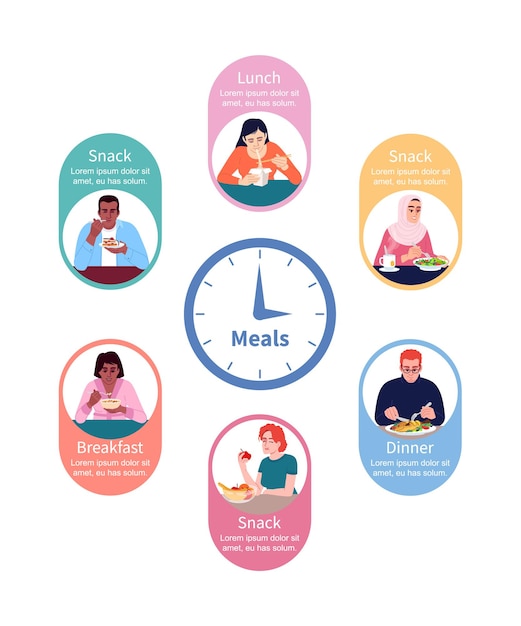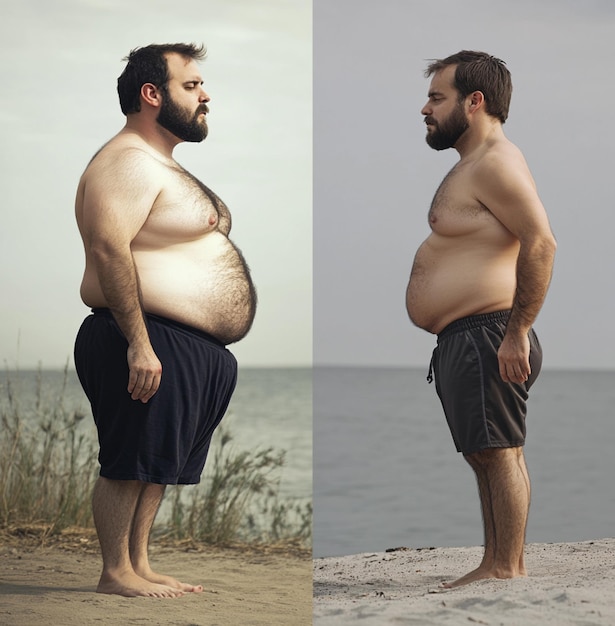Intermittent Fasting 16/8: Lose 10 Pounds in a Month?

Intermittent fasting, particularly the 16/8 method, involves eating during an 8-hour window and fasting for 16 hours, which may potentially lead to a weight loss of around 10 pounds in a month when combined with a balanced diet and regular exercise.
Embarking on a weight loss journey can often feel overwhelming, but what if there was a sustainable and straightforward approach to help you achieve your goals? The Intermittent Fasting: Can a 16/8 Schedule Really Help You Lose 10 Pounds in a Month? method has gained popularity as a flexible eating pattern that could potentially lead to significant results.
Understanding the 16/8 Intermittent Fasting Method
The 16/8 intermittent fasting (IF) method is a popular dietary approach that involves restricting your daily eating window to 8 hours, followed by a 16-hour fasting period. This pattern aims to shift the body’s metabolism and promote weight loss, among other potential health benefits.
What Exactly is Intermittent Fasting?
Intermittent fasting is not a diet in the conventional sense, but rather an eating pattern that cycles between periods of eating and voluntary fasting on a regular schedule. During the fasting periods, you typically consume little to no calories, while during the eating windows, you can eat your meals.
How Does the 16/8 Method Work?
The 16/8 method, also known as the Leangains method, involves fasting for 16 hours and eating during an 8-hour window. For example, you might choose to eat between noon and 8 pm, and then fast from 8 pm to noon the next day. This extended fasting period is intended to allow the body to burn fat for energy.
- 🕒 **Time-Restricted Eating:** Focuses on when you eat rather than what you eat.
- 🔥 **Fat Burning:** During the fasting window, your body may switch to burning stored fat for energy.
- 🍎 **Calorie Control:** It can naturally lead to reduced calorie intake.
The 16/8 method can be appealing because it’s relatively easy to integrate into your daily routine. It doesn’t require significant changes to what you eat, just when you eat, making it a flexible approach for many individuals.

The 16/8 method is a user-friendly approach to intermittent fasting, promoting fat burning and potentially leading to weight loss by managing when, not necessarily what, you consume.
Potential Benefits of the 16/8 Method for Weight Loss
One of the primary reasons people adopt the 16/8 intermittent fasting method is to lose weight. This approach offers several potential mechanisms that can contribute to weight loss, making it an appealing option for those looking to shed pounds.
Calorie Restriction and Weight Loss
By limiting your eating window to 8 hours, you may naturally consume fewer calories. This calorie restriction is a fundamental factor in weight loss, as your body needs to burn more calories than it consumes to lose weight.
Improved Insulin Sensitivity
Intermittent fasting has been shown to improve insulin sensitivity. When your body is more sensitive to insulin, it can better regulate blood sugar levels and store glucose in the muscles rather than as fat.
Increased Fat Burning
During the 16-hour fasting period, your body may switch to burning stored fat for energy. This metabolic shift can help reduce body fat percentage and contribute to weight loss.
- 📉 **Reduced Calorie Intake:** Can help create a calorie deficit necessary for weight loss.
- 🩸 **Better Blood Sugar Control:** Enhanced insulin sensitivity aids in managing blood sugar.
- 💪 **Fat Metabolism:** Promotes the use of stored fat as a primary energy source.
The 16/8 method can be a useful tool for weight loss by promoting calorie reduction, improving insulin sensitivity, and increasing fat burning.
Is Losing 10 Pounds in a Month Realistic with 16/8?
While the 16/8 intermittent fasting method can be effective for weight loss, it’s essential to have realistic expectations. Losing 10 pounds in a month is possible, but it depends on various factors, including your starting weight, diet, exercise routine, and overall lifestyle.
Factors Influencing Weight Loss
Several factors influence how quickly you can lose weight with the 16/8 method. Your initial weight, metabolic rate, diet quality, and physical activity level all play significant roles. Individuals with higher starting weights may see more rapid initial weight loss.
The Importance of Diet and Exercise
To maximize weight loss with the 16/8 method, it’s crucial to focus on eating a healthy, balanced diet during your eating window. This includes consuming whole foods, lean proteins, fruits, vegetables, and healthy fats. Regular exercise, such as cardio and strength training, can further enhance weight loss.
Sustainable vs. Unsustainable Weight Loss
Aim for a sustainable weight loss rate, typically around 1-2 pounds per week. Rapid weight loss can sometimes lead to muscle loss, nutrient deficiencies, and a higher likelihood of regaining the weight. Focus on making gradual, long-term changes to your diet and lifestyle.
- ⚖️ **Individual Differences:** Weight loss varies based on individual factors like metabolism and activity level.
- 🥗 **Balanced Diet:** Eating nutritious foods during your eating window is essential.
- 🏃 **Regular Exercise:** Combining IF with exercise can boost weight loss results.
Losing 10 pounds in a month with the 16/8 method is feasible but relies heavily on individual factors, dietary choices, and exercise habits. A sustainable approach focusing on long-term lifestyle changes is crucial for lasting results.

Tips for Maximizing Your Results with the 16/8 Method
To increase your chances of success with the 16/8 intermittent fasting method, consider incorporating these tips into your routine. Consistency, smart food choices, and mindful habits can significantly impact your results.
Stay Hydrated
Drinking plenty of water is essential during both your fasting and eating windows. Water can help you feel full, reduce cravings, and support overall health. Aim for at least 8 glasses of water per day.
Choose Nutrient-Dense Foods
Focus on eating nutrient-dense foods during your eating window to ensure you’re getting all the vitamins, minerals, and macronutrients your body needs. Include plenty of fruits, vegetables, lean proteins, and healthy fats in your meals.
Plan Your Meals
Planning your meals in advance can help you stay on track and avoid unhealthy choices. Prepare a meal plan at the beginning of the week and stick to it as much as possible. This can also prevent overeating during your eating window.
- 💧 **Hydration is Key:** Drink plenty of water to stay hydrated and manage hunger.
- 🥦 **Nutrient-Rich Diet:** Prioritize whole, unprocessed foods.
- 📅 **Meal Planning:** Prepare meals in advance to avoid unhealthy choices.
By staying hydrated, choosing nutrient-dense foods, and planning your meals, you can optimize your results with the 16/8 intermittent fasting method and make the most of your weight loss journey.
Potential Downsides and Considerations
While the 16/8 intermittent fasting method offers many potential benefits, it’s essential to be aware of the potential downsides and considerations. This approach may not be suitable for everyone, and it’s crucial to listen to your body and consult with a healthcare professional if you have any concerns.
Possible Side Effects
Some people may experience side effects such as hunger, fatigue, headaches, or irritability when starting the 16/8 method. These side effects are often temporary and can be minimized by staying hydrated, eating nutrient-dense foods, and gradually adjusting to the new eating pattern.
Not Suitable for Everyone
The 16/8 method may not be suitable for everyone, especially those with certain medical conditions, such as diabetes, eating disorders, or a history of hypoglycemia. Pregnant or breastfeeding women should also avoid intermittent fasting.
Consulting with a Healthcare Professional
Before starting the 16/8 intermittent fasting method, it’s recommended to consult with a healthcare professional, especially if you have any underlying health conditions or are taking medications. They can help you determine if this approach is safe and appropriate for you.
- ⚠️ **Potential Side Effects:** Be aware of possible side effects like hunger and fatigue.
- 🩺 **Medical Conditions:** Not suitable for individuals with certain health issues.
- 👨⚕️ **Professional Advice:** Consult with a healthcare provider before starting.
The 16/8 method may have potential downsides, including possible side effects and contraindications for certain individuals. Consulting with a healthcare professional is advisable before starting this approach.
Long-Term Sustainability and Lifestyle Integration
For any dietary approach to be successful in the long term, it needs to be sustainable and easily integrated into your lifestyle. The 16/8 intermittent fasting method can be a good option for those who are looking for a flexible and manageable eating pattern.
Adaptability to Your Schedule
One of the advantages of the 16/8 method is its adaptability to your schedule. You can adjust the eating and fasting windows to fit your daily routine and preferences. This flexibility makes it easier to stick to the method consistently.
Mindful Eating Habits
Intermittent fasting can promote mindful eating habits by encouraging you to be more aware of your hunger and fullness cues. Taking the time to savor your meals and pay attention to your body’s signals can help you avoid overeating and make healthier food choices.
Combining with Other Healthy Habits
To maximize the benefits of the 16/8 method, combine it with other healthy habits, such as regular exercise, stress management techniques, and sufficient sleep. These lifestyle factors can support your overall well-being and enhance your weight loss efforts.
- 🗓️ **Flexible Scheduling:** Easily adjust eating windows to fit your lifestyle.
- 🧘 **Mindful Eating:** Become more aware of hunger and fullness cues.
- 🌱 **Holistic Approach:** Combine with other healthy habits for overall well-being.
The 16/8 method can be a sustainable approach to weight loss when combined with adaptability, mindful eating, and other healthy lifestyle habits, leading to long-term success.
| Key Point | Brief Description |
|---|---|
| 🕒 16/8 Method | Eat for 8 hours, fast for 16 hours daily. |
| 🔥 Fat Burning | Body uses stored fat during fasting. |
| 🍎 Balanced Diet | Eat nutritious foods during your window. |
| 🏃 Exercise | Combine with exercise for better results. |
What are the common foods to eat during the 8-hour window?
▼
Focus on whole foods: lean proteins, vegetables, fruits, healthy fats like avocados, nuts, and olive oil. These provide essential nutrients and help stay full.
▼
You can drink water, black coffee, unsweetened tea, and other zero-calorie beverages. These help suppress appetite and keep you hydrated without breaking your fast.
▼
Aim for at least 3-4 times a week. Include a mix of cardio (like running or cycling) and strength training (like weight lifting) to maximize fat loss and muscle gain.
▼
Drink plenty of water, stay busy with activities, and choose filling, nutrient-dense foods during your eating window. A gradual adjustment to the fasting schedule also helps.
▼
Listen to your body. If you experience prolonged fatigue, headaches, or other issues, adjust your eating window. Consider consulting with a healthcare professional for guidance.
Conclusion
The 16/8 intermittent fasting method can be a useful tool for weight loss, potentially helping you lose 10 pounds in a month when combined with a balanced diet and regular exercise. Remember to prioritize a sustainable approach, consult with a healthcare professional if needed, and listen to your body to make the most of your weight loss journey.
